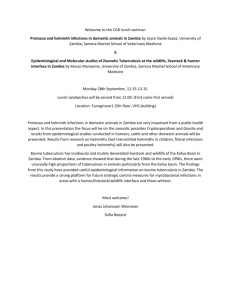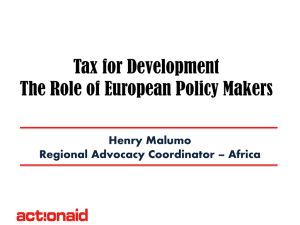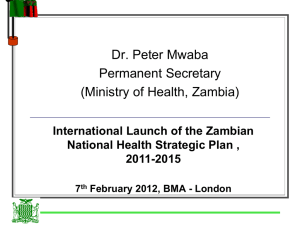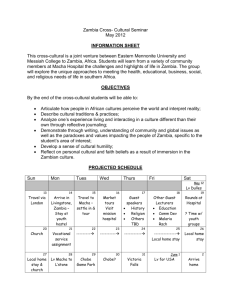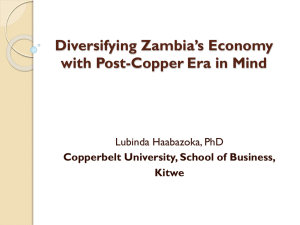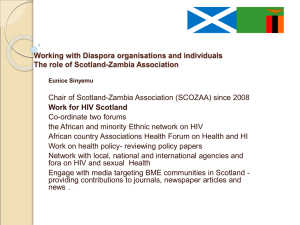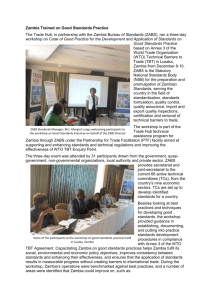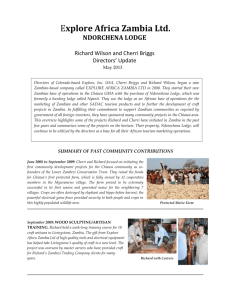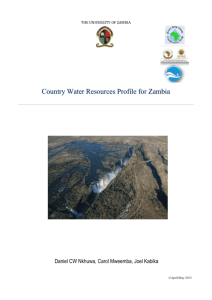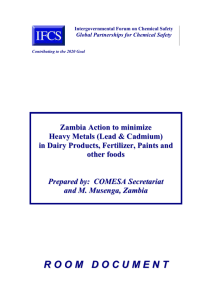Zambia
advertisement
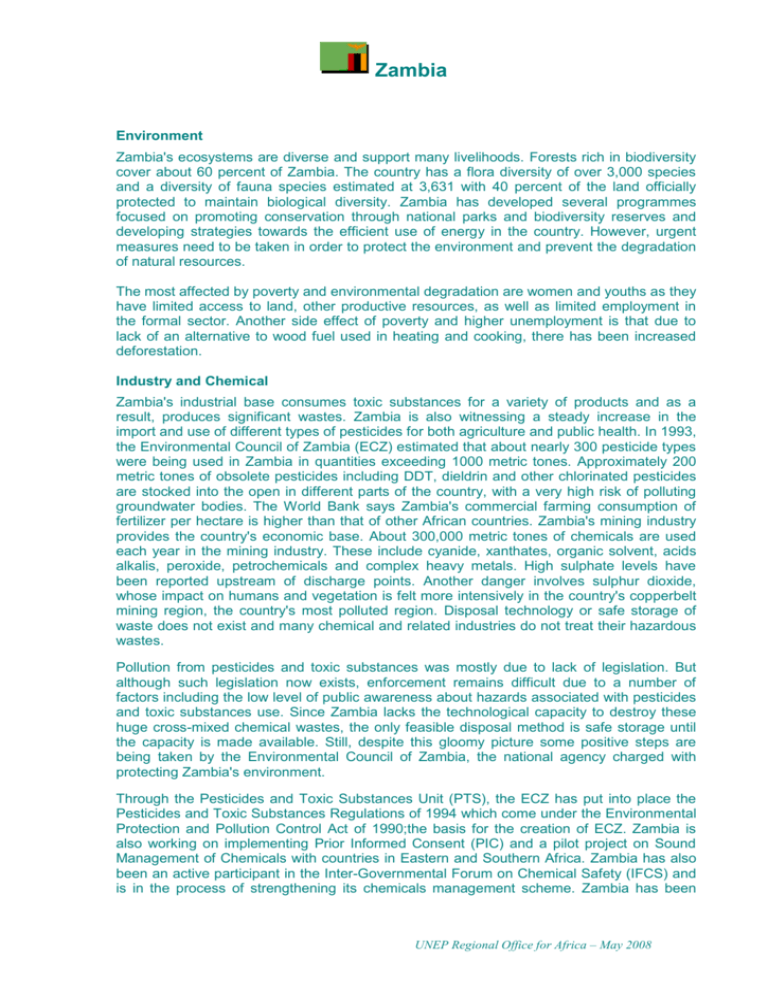
Zambia Environment Zambia's ecosystems are diverse and support many livelihoods. Forests rich in biodiversity cover about 60 percent of Zambia. The country has a flora diversity of over 3,000 species and a diversity of fauna species estimated at 3,631 with 40 percent of the land officially protected to maintain biological diversity. Zambia has developed several programmes focused on promoting conservation through national parks and biodiversity reserves and developing strategies towards the efficient use of energy in the country. However, urgent measures need to be taken in order to protect the environment and prevent the degradation of natural resources. The most affected by poverty and environmental degradation are women and youths as they have limited access to land, other productive resources, as well as limited employment in the formal sector. Another side effect of poverty and higher unemployment is that due to lack of an alternative to wood fuel used in heating and cooking, there has been increased deforestation. Industry and Chemical Zambia's industrial base consumes toxic substances for a variety of products and as a result, produces significant wastes. Zambia is also witnessing a steady increase in the import and use of different types of pesticides for both agriculture and public health. In 1993, the Environmental Council of Zambia (ECZ) estimated that about nearly 300 pesticide types were being used in Zambia in quantities exceeding 1000 metric tones. Approximately 200 metric tones of obsolete pesticides including DDT, dieldrin and other chlorinated pesticides are stocked into the open in different parts of the country, with a very high risk of polluting groundwater bodies. The World Bank says Zambia's commercial farming consumption of fertilizer per hectare is higher than that of other African countries. Zambia's mining industry provides the country's economic base. About 300,000 metric tones of chemicals are used each year in the mining industry. These include cyanide, xanthates, organic solvent, acids alkalis, peroxide, petrochemicals and complex heavy metals. High sulphate levels have been reported upstream of discharge points. Another danger involves sulphur dioxide, whose impact on humans and vegetation is felt more intensively in the country's copperbelt mining region, the country's most polluted region. Disposal technology or safe storage of waste does not exist and many chemical and related industries do not treat their hazardous wastes. Pollution from pesticides and toxic substances was mostly due to lack of legislation. But although such legislation now exists, enforcement remains difficult due to a number of factors including the low level of public awareness about hazards associated with pesticides and toxic substances use. Since Zambia lacks the technological capacity to destroy these huge cross-mixed chemical wastes, the only feasible disposal method is safe storage until the capacity is made available. Still, despite this gloomy picture some positive steps are being taken by the Environmental Council of Zambia, the national agency charged with protecting Zambia's environment. Through the Pesticides and Toxic Substances Unit (PTS), the ECZ has put into place the Pesticides and Toxic Substances Regulations of 1994 which come under the Environmental Protection and Pollution Control Act of 1990;the basis for the creation of ECZ. Zambia is also working on implementing Prior Informed Consent (PIC) and a pilot project on Sound Management of Chemicals with countries in Eastern and Southern Africa. Zambia has also been an active participant in the Inter-Governmental Forum on Chemical Safety (IFCS) and is in the process of strengthening its chemicals management scheme. Zambia has been UNEP Regional Office for Africa – May 2008 chosen as one of the pilot study countries (Zambia in Africa and Mexico in Latin America and the Caribbean) for the United Nations Institute for Training and Research (UNITAR)/Inter-Organization Programme for the Sound Management of Chemicals (IOMC) National Profile Programme. Biodiversity Zambia has ratified the Convention on Biodiversity and the Cartagena Protocol on Biosafety and is party to the Convention on International Trade on Endangered Species (CHECK) Energy In recent years, total annual energy consumption was in the order of 4.6 million tonnes of Oil Equivalent (TOE) per annum. GDP per unit of energy used rose slightly from 1.29 in 1998 to 1.60 in 1999, suggesting a more efficient use of energy. Carbon dioxide emissions have also been consistently below 1 metric ton per capita due to low fossil fuels consumption and industrialization. National energy consumption consists of 72 percent wood fuel, 14 percent electricity, 12 percent petroleum and 2 percent coal. Electricity supply is mainly confined to middle and high-income households in the urban areas. Only 20 percent of the Zambian population has access to electricity, 2 percent in rural areas and 35 percent in urban areas. Most households depend on solid fuels, i.e. wood fuel, charcoal and coal, for their cooking. For instance in 2000, 97 percent of rural and 62 percent of urban households used solid fuels for cooking. This high level of solid fuel utilization contributes directly to deforestation. UNEP Regional Office for Africa – February 2008

